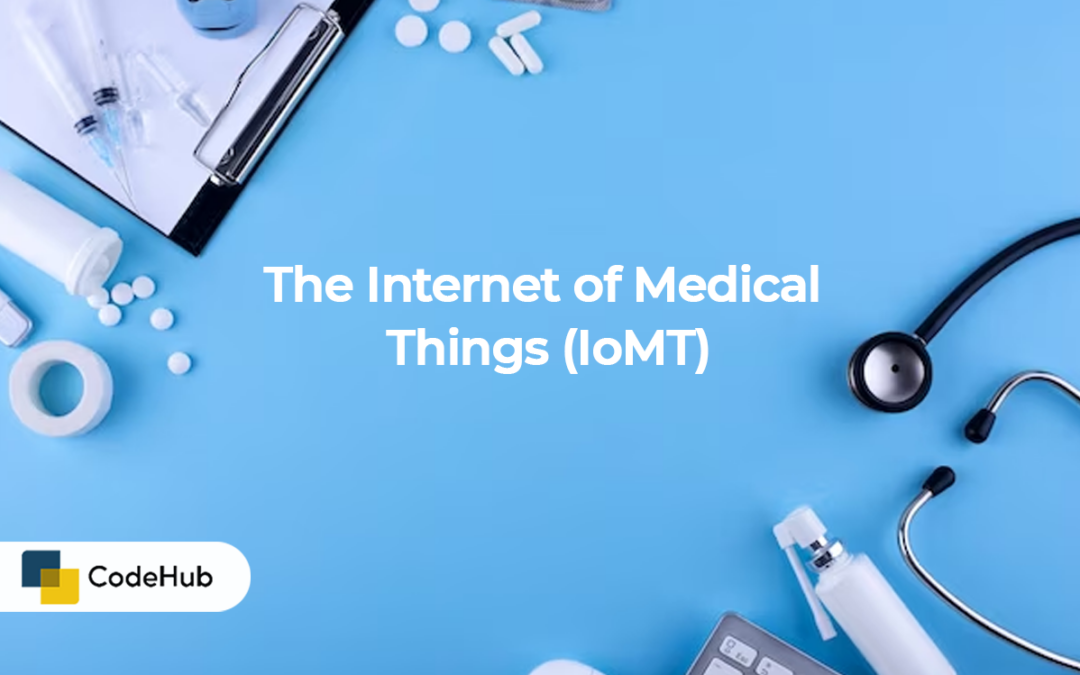In the age of digital transformation, the convergence of technology and healthcare has given rise to a groundbreaking phenomenon known as the Internet of Medical Things (IoMT). By connecting medical devices, wearables, and healthcare systems to the internet, IoMT is poised to revolutionize the way healthcare is delivered, monitored, and managed. In this blog, we’ll explore the transformative potential of IoMT and its implications for the future of healthcare.
The Power of Connectivity in Healthcare
At its core, IoMT is about harnessing the power of connectivity to improve patient outcomes, enhance clinical decision-making, and optimize healthcare delivery. By integrating medical devices and wearables with internet-enabled platforms, healthcare providers can collect real-time data on patients’ vital signs, health metrics, and treatment adherence, enabling proactive and personalized care.
From smart insulin pumps and continuous glucose monitors for diabetes management to remote patient monitoring devices and telemedicine platforms for virtual consultations, IoMT encompasses a wide range of technologies that empower patients and clinicians alike to better manage chronic conditions, prevent disease progression, and improve overall well-being.
Enhancing Patient Engagement and Empowerment
One of the key benefits of IoMT is its ability to empower patients to take an active role in their own healthcare journey. Through wearable devices and mobile health apps, patients can track their health metrics, monitor medication adherence, and receive personalized health recommendations in real-time. This continuous feedback loop fosters greater engagement, motivation, and accountability, leading to improved health outcomes and better quality of life.
Moreover, IoMT enables seamless communication and collaboration between patients and healthcare providers, breaking down barriers to access and ensuring timely interventions and support. Whether it’s through remote monitoring, virtual consultations, or digital health coaching, IoMT facilitates more efficient and patient-centered care delivery models that prioritize convenience, accessibility, and affordability.
Optimizing Clinical Decision-Making and Healthcare Delivery
In addition to empowering patients, IoMT has the potential to revolutionize clinical decision-making and healthcare delivery processes. By aggregating and analyzing large volumes of real-world patient data, IoMT enables healthcare providers to gain valuable insights into disease trends, treatment effectiveness, and population health patterns.
With predictive analytics, machine learning algorithms, and artificial intelligence, IoMT can help identify high-risk patients, predict disease progression, and optimize treatment protocols, leading to more personalized and proactive care strategies. Moreover, by streamlining workflows, reducing administrative burdens, and automating routine tasks, IoMT frees up healthcare professionals to focus on delivering high-value care and building meaningful patient relationships.
Overcoming Challenges and Ensuring Ethical Use
Despite its transformative potential, IoMT also poses challenges related to data privacy, security, and interoperability. Safeguarding sensitive patient information, ensuring compliance with regulatory requirements, and mitigating cybersecurity risks are paramount concerns in the IoMT ecosystem.
Furthermore, as IoMT becomes more pervasive, it’s essential to address ethical considerations surrounding data ownership, consent, and transparency. Patients must have control over their health data and be informed about how it is collected, used, and shared to ensure trust and accountability in the healthcare system.
Conclusion: Embracing the Future of Healthcare
In conclusion, the Internet of Medical Things represents a paradigm shift in healthcare delivery, ushering in a new era of connectivity, empowerment, and innovation. By leveraging the power of technology to bridge the gap between patients and providers, IoMT has the potential to transform healthcare delivery models, improve patient outcomes, and enhance the overall quality and efficiency of care.
As we embrace the opportunities afforded by IoMT, it’s crucial to prioritize data privacy, security, and ethical considerations to ensure that technology serves the best interests of patients and society as a whole. By fostering collaboration between stakeholders, investing in robust infrastructure and governance frameworks, and championing a patient-centric approach to innovation, we can harness the full potential of IoMT to create a healthier, more connected world.

